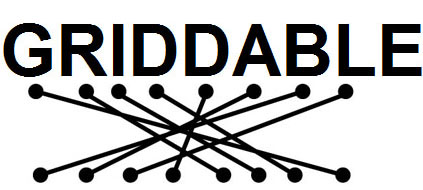A New Way to look at Data
Sunday, March 14th, 2010 in: Current Events, News
Last year, I read an amazing book called Information Anxiety, written by Richard Saul Wurman, the man responsible for the design of the Yellow Pages. Take a moment to imagine what you would do if you had to index the information for every business in a city. You’re given a stack of papers five feet tall, each page represents one business that needs to be easily accessible in the final product. Wurman took all this data and turned it into the most popular physical business index of the past two decades. People are still receiving and using Yellowpages even now. His solutions are elegant because the form truly follows function–the data determines its own structure, but he’s concerned mostly with the usefulness of information. That’s why the main Yellowpages is broken down into topical categories, so people can find the kind of business they’re looking for. His maps are even more impressive examples of thoughtful information architecture.
Anyways, in Information Anxiety, he talked about the overload of information that comes from our modern predicament of being inundated with data with few tools to actually make sense of it. Information is data that actually has meaning, which means it needs to be processed somehow in order for us to glean any real meaning from it. He saw the daily avalanche of data as a growing force in our lives that prevented us from ever being satisfied with how much information we’ve consumed. He wrote about all this, in 1989. Apparently he’s updated it since the computer boom, but his predictions 20 years ago have proven surprisingly accurate and relevant.
It seems that a few people have also been paying attention to this onslaught of data, and have decided that a new and innovative approach to how we think about information is necessary. Surprisingly enough, some of those people work at Microsoft, and they’ve been working on Pivot, an information browser that itself is a metaphor for the way we should be looking at vast pools of information: zooming in to see the detail, and zooming out to see trends and connections that would otherwise be obfuscated by the body of information itself.
I’m impressed with the level of thinking here, but the one thing Pivot is lacking is the means to semantically tag the data by itself so it can be automatically indexed. It’s no advancement for artificial intelligence, but it does present a new way to look at the data, and a new way to think about the way it’s all connected in different ways. A lot of people talk trash about it because it’s simply an interface to see the data, but interfaces shape the way people look at and think about data, and that can be a game-changer for future generations. It’s so hard to get people to be able to think about fine details, then zooming out to re-evaluate things from a big-picture standpoint. With technology of like that, it could be so much easier to brainstorm as a graphic designer, but more importantly, a generation that grows up interacting with information in this way will be so much more likely to understand how to change their perspective on the information before them.
I’m looking forward to the future.








Leave a Reply